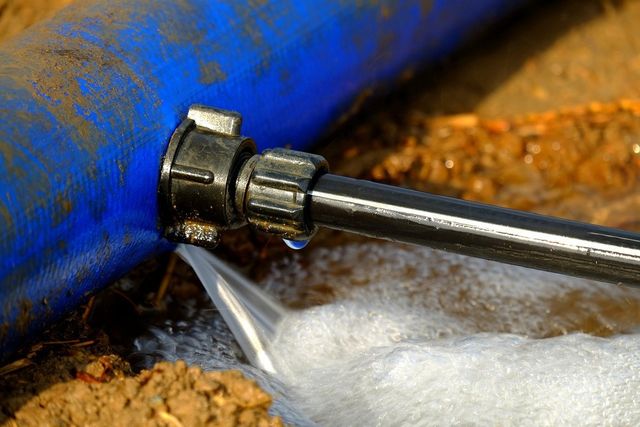The article author is making a number of good pointers on the subject of Hacks to detect leaks in general in the content on the next paragraphs.

Early detection of dripping water lines can reduce a prospective disaster. Some small water leakages might not be noticeable.
1. Take A Look At the Water Meter
Every residence has a water meter. Inspecting it is a surefire way that aids you discover leaks. For beginners, switch off all the water resources. Make certain no one will flush, use the faucet, shower, run the washing maker or dishwashing machine. From there, most likely to the meter and watch if it will alter. Given that nobody is utilizing it, there must be no movements. If it relocates, that indicates a fast-moving leak. Similarly, if you discover no changes, wait an hour or more and examine back once again. This means you may have a sluggish leakage that could also be underground.
2. Check Water Usage
Examine your water costs and track your water usage. As the one paying it, you should discover if there are any type of disparities. If you find sudden changes, regardless of your intake being the same, it indicates that you have leakages in your plumbing system. Remember, your water costs ought to drop under the exact same array every month. An unexpected spike in your expense shows a fast-moving leakage.
A consistent rise every month, also with the exact same routines, reveals you have a sluggish leak that's additionally slowly intensifying. Call a plumber to completely check your residential or commercial property, specifically if you really feel a warm location on your floor with piping below.
3. Do a Food Coloring Test
When it comes to water usage, 30% comes from commodes. If the color somehow infiltrates your bowl during that time without flushing, there's a leakage between the storage tank and also dish.
4. Asses Exterior Lines
Don't neglect to inspect your exterior water lines also. Test faucets by connecting a yard pipe. Should water leak out of the link, you have a loose rubber gasket. Change this and make sure all links are tight. It will assist obtain it skillfully examined and also kept annually if you've obtained a sprinkler system. One tiny leak can waste lots of water and increase your water costs.
5. Examine as well as Analyze the Circumstance
Homeowners should make it a habit to check under the sink counters and also inside closets for any bad odor or mold and mildew growth. These 2 red flags suggest a leak so punctual attention is required. Doing regular evaluations, even bi-annually, can conserve you from a major trouble.
Inspect for discolorations as well as damaging as many devices as well as pipes have a life expectations. If you presume dripping water lines in your plumbing system, don't wait for it to intensify.
Early detection of dripping water lines can mitigate a prospective disaster. Some little water leakages may not be visible. Inspecting it is a proven means that assists you find leaks. One tiny leak can throw away lots of water as well as surge your water costs.
If you presume leaking water lines in your plumbing system, do not wait for it to escalate.
WARNING SIGNS OF WATER LEAKAGE BEHIND THE WALL
PERSISTENT MUSTY ODORS
As water slowly drips from a leaky pipe inside the wall, flooring and sheetrock stay damp and develop an odor similar to wet cardboard. It generates a musty smell that can help you find hidden leaks.
MOLD IN UNUSUAL AREAS
Mold usually grows in wet areas like kitchens, baths and laundry rooms. If you spot the stuff on walls or baseboards in other rooms of the house, it’s a good indicator of undetected water leaks.
STAINS THAT GROW
When mold thrives around a leaky pipe, it sometimes takes hold on the inside surface of the affected wall. A growing stain on otherwise clean sheetrock is often your sign of a hidden plumbing problem.
PEELING OR BUBBLING WALLPAPER / PAINT
This clue is easy to miss in rooms that don’t get much use. When you see wallpaper separating along seams or paint bubbling or flaking off the wall, blame sheetrock that stays wet because of an undetected leak.
BUCKLED CEILINGS AND STAINED FLOORS
If ceilings or floors in bathrooms, kitchens or laundry areas develop structural problems, don’t rule out constant damp inside the walls. Wet sheetrock can affect adjacent framing, flooring and ceilings.
https://www.servicemasterbyzaba.com/blog/how-to-detect-water-leakage-in-walls/

As a keen reader on Locating water leaks, I imagined sharing that information was appropriate. If you enjoyed reading our post if you please be sure to share it. Many thanks for your time. Don't hesitate to pay a visit to our blog back soon.